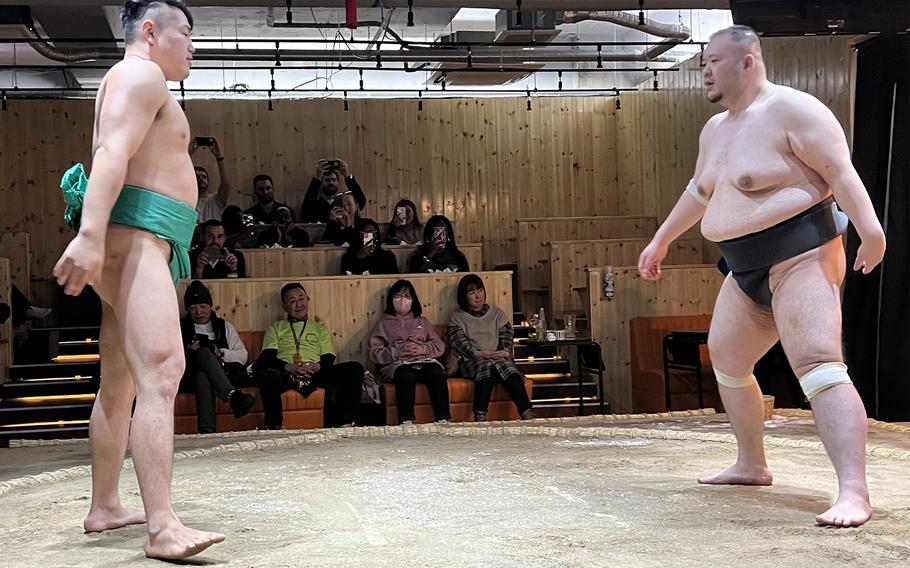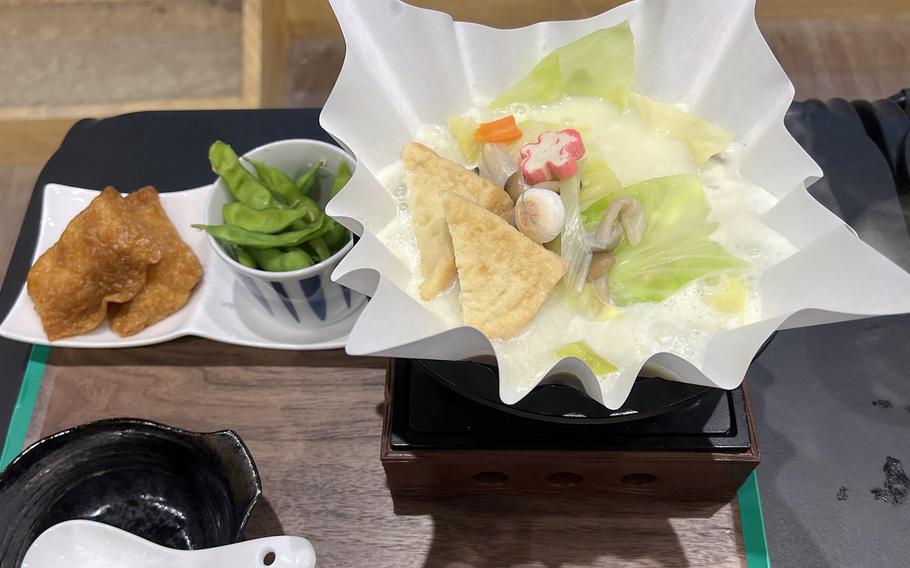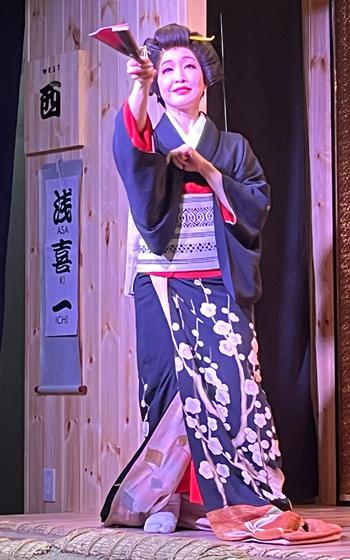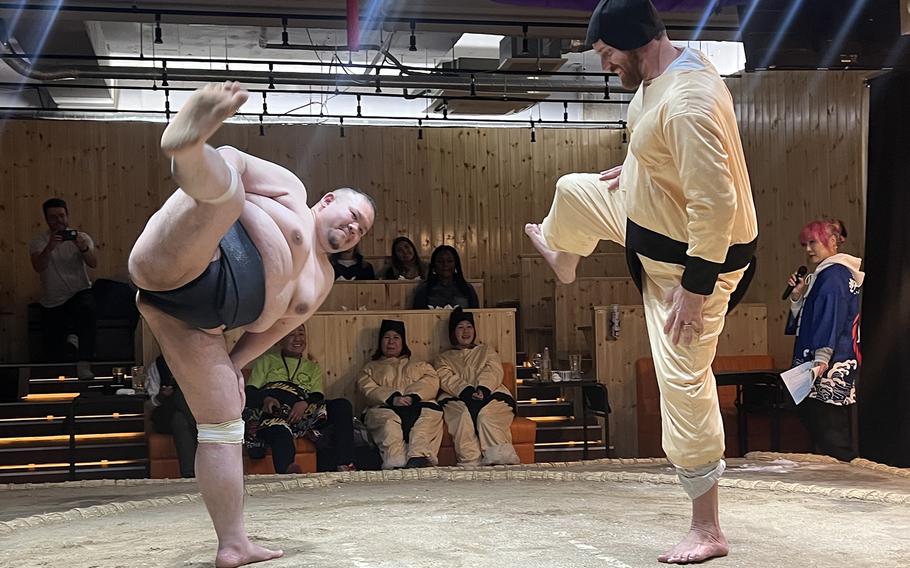
To win a sumo bout, a wrestler must force the opponent from the dohyo or to touch the ground with any part of the body other than the soles of the feet. (Kelly Agee/Stars and Stripes)
Dinner and a show at Asakusa Sumo Club means a hearty meal fit for a 350-pound wrestler and a chance to enter the ring yourself.
The venue is inside the Asakusa Rockza Building in Asakusa, a historical Tokyo neighborhood popular with tourists for its unique blend of traditional and modern cultures.
The restaurant seats 76 around the dohyo, a 15-foot-diameter circle of partially buried rice-straw bales in which a sumo bout occurs.
Seats are 16,000 yen — about $108 — per adult and $81 for kids younger than 12. I booked a ringside VIP ticket for 20,000 yen. The next highest level, the V-VIP ticket, costs $406 and puts you in a sofa seat facing the dohyo center.
But first, dinner. The club serves chankonabe or “chanko,” a Japanese stew commonly eaten by wrestlers. It is a combination of four stocks, or dashi: free-range chicken, bonito, kelp and shiitake mushrooms.

Chankonabe is a Japanese stew commonly eaten by sumo wrestlers. (Kelly Agee/Stars and Stripes)
The stew is served in a chafing dish, with a candle to keep it warm, and comes with a choice of tea, juice, beer or sake.
The meal includes edamame, inarizushi sushi and rice covered in a fried tofu skin that’s been cooked with chicken in a sweet soy sauce.
A tasty, filling vegetarian option is available with miso stock and tofu.
The show starts with a master of ceremonies who explains, in English and Japanese, the history of sumo wrestlers and how the meal is connected to them.
For instance, the wrestlers eat chicken rather than the flesh of any other animal before a tournament because they should always be on two legs like a chicken, not on all fours.

A traditional Japanese fan dance is performed at Asakusa Sumo Club in Tokyo, March 9, 2024. (Kelly Agee/Stars and Stripes)
Before the sumo demonstration, a woman performs a traditional Japanese fan dance to traditional music.
Before the main event, the wrestlers, who are sumo students and former professionals, are introduced, along with an explanation of rules and basic moves. Rules include no punching, no hair pulling and no kicking, all of which the wrestlers demonstrate in a humorous fashion.
To win a sumo bout, a wrestler must force the opponent from the dohyo or to touch the ground with any part of the body other than the soles of the feet.
After the demonstrations, three rounds of actual sumo wrestling begin. Audience members are encouraged by the master of ceremonies to root for their favorites, and some onlookers even play a small role. Before one round, I helped a wrestler throw salt into the ring.
This tradition springs from Shintoism, Japan’s oldest religion, and is meant to purify the ring by dispersing evil spirits.

Audience volunteers — wearing inflatable sumo suits — may combat the wrestler of their choice at Asakusa Sumo Club in Tokyo. (Kelly Agee/Stars and Stripes)
When the matches conclude, up to six audience volunteers — wearing inflatable sumo suits — may combat the wrestler of their choice.
The event ends with complimentary photos with the wrestlers that are printed as souvenirs. I also took home an Asakusa Sumo Club bag, with the logo on the front, a wooden box and a tea towel.
Asakusa Sumo Club
Location: 2-10-12-1F Asakusa, Taito-ku, Tokyo 111-0032
Hours: Open daily, noon to 10 p.m.
Prices: 16,000 yen to 20,000 yen, depending on where you sit.
Dress: Casual
Directions: A less than 10-minute walk from Tawaramachi Station on the Ginza Line.
Information: Online: asakusa-sumo.com